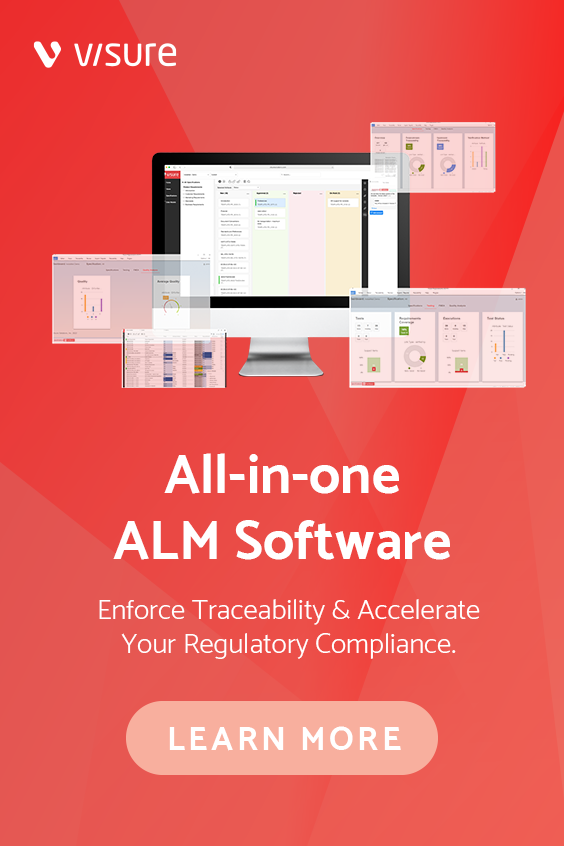As systems become more complex, especially in industries like aerospace, defense, automotive, and medical devices, organizations face significant challenges in effectively managing requirements and transforming them into functional designs. Traditional requirements management processes often struggle to keep up with the fast-paced demands of modern, safety-critical, and compliance-driven industries. This is where Model-Based Systems Engineering (MBSE) shines, offering a structured, visual, and integrative approach to systems engineering that enhances the link between requirements and design. This article explores the synergy between MBSE and requirements management and shows how this integration can bridge the gap from requirements to design, streamlining complex system development.
The Role of Requirements Management in Systems Engineering
Requirements management is the backbone of successful systems engineering. It ensures that all project requirements are identified, tracked, and verified across the project lifecycle, providing a foundation for compliance, quality, and project alignment. However, managing complex requirements often involves vast amounts of data, multiple stakeholders, and rigorous validation and traceability needs.
Despite these efforts, many requirements management processes struggle to provide real-time visibility and traceability from requirements to design. This challenge becomes especially critical when dealing with systems that require compliance with industry standards (e.g., ISO 26262 for automotive, DO-178C for aerospace). Without a solid bridge from requirements to design, organizations risk missing requirements, overlooking dependencies, and introducing costly delays.
Introducing Model-Based Systems Engineering (MBSE)
MBSE transforms traditional document-based approaches by using models to represent systems visually, capturing intricate details about system behavior, interactions, and structure. These models act as a “single source of truth,” bringing clarity to complex systems by capturing requirements, design, tests, and interdependencies within a unified model. For organizations dealing with intricate systems, MBSE improves collaboration, promotes consistency, and facilitates early error detection, helping teams understand how a change in requirements impacts the entire system.
However, to fully capitalize on MBSE, it needs to work hand-in-hand with requirements management, ensuring that system requirements are not only documented but are directly traceable throughout the design process. This integration is the crux of bridging the requirements-to-design gap effectively.
Bridging the Gap: How MBSE and Requirements Management Work Together
The integration of MBSE with requirements management enables a seamless transition from requirements gathering to system design. Here’s how MBSE complements the requirements management process:
- End-to-End Traceability – MBSE facilitates traceability by directly linking requirements to system models, enabling engineers to see the impact of changes across different system components. When requirements are connected to models, every change made to a requirement is automatically reflected throughout the model, ensuring that no requirement is overlooked.
- Enhanced Visualization of Requirements in Design Context – By representing requirements visually within the system model, MBSE helps stakeholders understand how requirements influence system behavior, architecture, and interactions. Engineers can see requirements in the context of the entire system, making it easier to assess feasibility, identify potential design issues early, and ensure that all requirements are accounted for.
- Streamlined Collaboration Across Disciplines – The synergy between MBSE and requirements management promotes collaboration across teams, such as software, hardware, and system engineering. With a central model linking requirements to design elements, teams from different disciplines can access real-time information and gain a holistic view of the system, reducing the silos that often hinder progress.
- Improved Verification and Validation (V&V) – Integrating MBSE with requirements management supports robust verification and validation processes. Engineers can trace each requirement through the system model, ensuring they are verifiable and testable. This integration allows teams to validate the design against requirements continuously, reducing the risk of non-compliance and costly rework during later project stages.
- Compliance and Risk Management – For industries bound by rigorous standards, integrating MBSE and requirements management ensures that compliance needs are systematically addressed. Requirements are captured, tracked, and verified within the model, and risks associated with non-compliance are minimized, providing a direct path from requirements to design, testing, and regulatory adherence.
Key Benefits of Integrating MBSE with Requirements Management
Integrating MBSE with requirements management yields several significant benefits:
- Early Detection of Design Flaws – MBSE’s visual models help identify conflicts or inconsistencies in requirements early on, enabling teams to address issues before they escalate, leading to significant time and cost savings.
- Enhanced System Agility – Systems are not static; as requirements change, MBSE allows the system model to evolve seamlessly, maintaining alignment with updated requirements and facilitating faster adaptation to changing project needs.
- Reduction in Project Risks and Errors – Traceability from requirements to design reduces the likelihood of errors, mitigating risks associated with missing requirements or unverified design elements.
- Increased Stakeholder Confidence – Clear traceability and validation of requirements in a visual model provide stakeholders with the assurance that their requirements are accurately represented and aligned with system objectives.
Building a Complete System Model
To bridge the gap between requirements and design, a complete system model must encompass various elements, including:
- Mission Needs and Objectives – Starting with clear mission objectives ensures that all requirements align with the overarching goals of the system.
- Requirements – A comprehensive, traceable requirements list forms the foundation of the model, capturing both functional and non-functional requirements, with connections to relevant system components.
- System Architecture – Representing the system’s structural design and its subcomponents visually allows for easier analysis of requirements impact and functional alignment.
- Test Scenarios and Cases – Including test cases within the model helps maintain a direct link between requirements, system components, and their associated tests, ensuring continuous verification.
- Risk Management – Capturing risks within the model enables real-time monitoring of potential issues and helps teams implement mitigation strategies.
- Software Development Stories – If the system includes software components, stories that detail software development objectives can be linked to requirements, maintaining alignment between hardware, software, and systems engineering.
Leveraging Visure’s Advanced Traceability for Enhanced Systems Engineering
Visure’s advanced traceability features facilitate a robust requirements management process by providing real-time insights into requirements coverage, traceability, and validation. By connecting requirements management with MBSE, Visure ensures that all components are traceable across the system’s lifecycle. For example, when a requirement changes, Visure can help identify affected components, notify relevant stakeholders, and provide a visual trace to ensure consistency.
Using Visure, organizations can measure and enhance systems engineering processes by:
- Tracking and managing changes efficiently across the entire project lifecycle.
- Improving compliance by ensuring requirements are traceable from inception through verification.
- Facilitating collaboration across engineering disciplines, from systems to software, creating an integrated, cross-functional engineering workflow.
Conclusion: The Future of Requirements Management and MBSE
The synergy between MBSE and requirements management is transforming how organizations approach complex systems engineering, ensuring that requirements are thoroughly defined, seamlessly integrated, and directly traceable to design elements. By bridging the gap between requirements and design, MBSE and requirements management drive a more agile, efficient, and reliable engineering process, especially in safety-critical and compliance-intensive industries.
For organizations looking to enhance their systems engineering processes, adopting an MBSE approach integrated with advanced requirements management tools, like Visure, can provide the clarity, traceability, and agility necessary to navigate today’s intricate development landscapes. As MBSE and requirements management continue to evolve, this powerful synergy will shape the future of systems engineering, helping organizations design with precision, adapt to change, and innovate confidently.
Check Out The Insightful Webinar
Check out the insightful webinar exploring how integrating a Model-Based Systems Engineering (MBSE) approach with a robust requirements management process can revolutionize your development lifecycle. In this session, we will delve into the critical connection between requirements and design, showing how to effectively bridge the gap using MBSE methodologies.
In this webinar, we’ll cover:
- Key Trends Shaping MBSE in Aerospace & Defense – Explore emerging trends driving the future of Model-Based Systems Engineering (MBSE) within the aerospace and defense industries.
- Requirements Traceability Challenges for Systems Engineers – Discuss common traceability challenges and strategies for improving system architecture and ensuring comprehensive requirements coverage.
- Building a Complete System Model – Learn how to create a holistic model that includes mission needs, requirements, architecture, tests, risks, and software stories.
- Leveraging Visure’s Advanced Traceability – Use Visure’s advanced traceability features to track, measure, and enhance your systems engineering processes throughout the lifecycle.
- Seamless Collaboration Across Engineering and Software Teams – Enhance team collaboration by connecting systems engineering processes with software development, ensuring integrated workflows and better outcomes.


